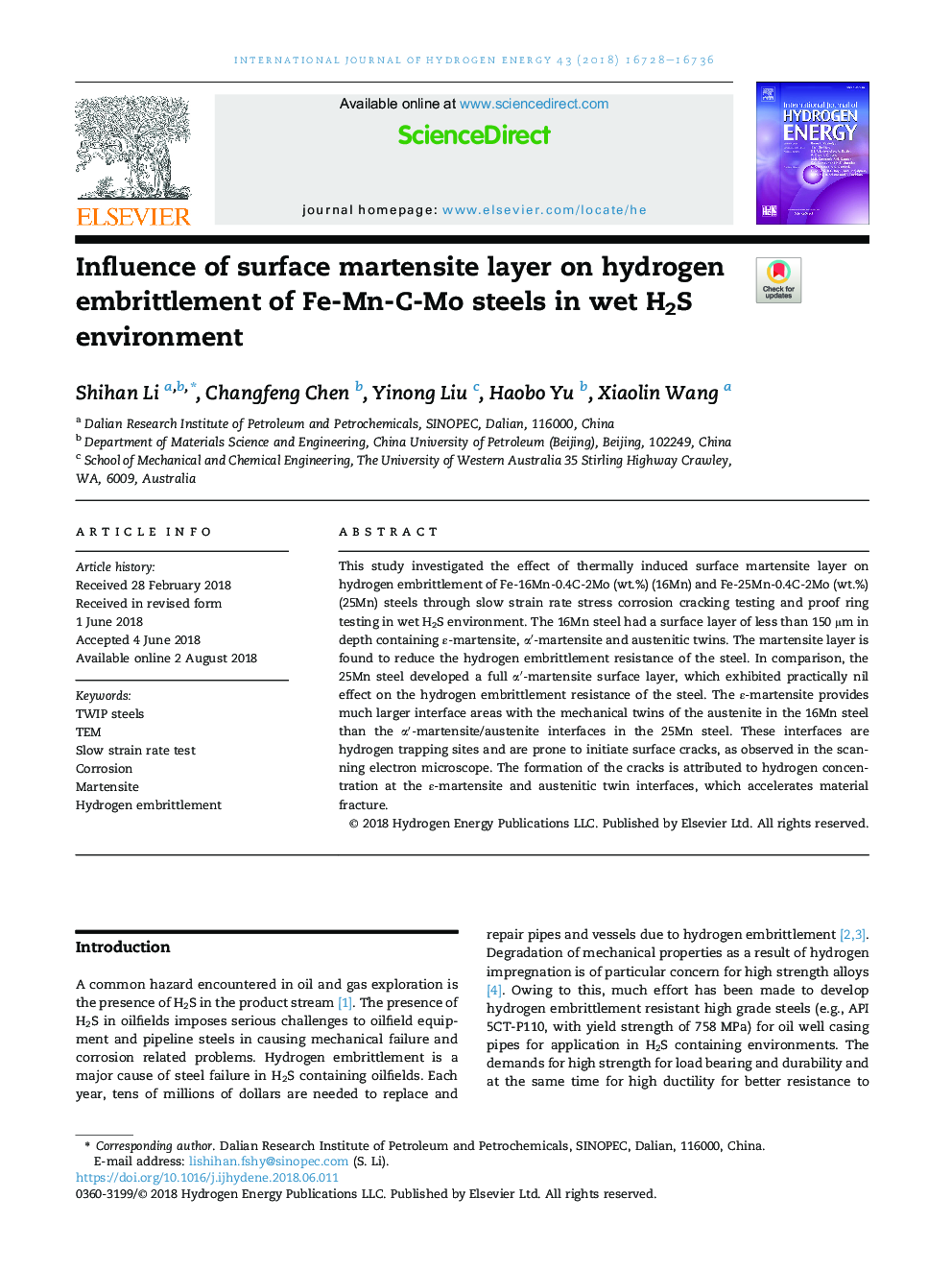| Article ID | Journal | Published Year | Pages | File Type |
|---|---|---|---|---|
| 8942839 | International Journal of Hydrogen Energy | 2018 | 9 Pages |
Abstract
This study investigated the effect of thermally induced surface martensite layer on hydrogen embrittlement of Fe-16Mn-0.4C-2Mo (wt.%) (16Mn) and Fe-25Mn-0.4C-2Mo (wt.%) (25Mn) steels through slow strain rate stress corrosion cracking testing and proof ring testing in wet H2S environment. The 16Mn steel had a surface layer of less than 150 μm in depth containing ε-martensite, αâ²-martensite and austenitic twins. The martensite layer is found to reduce the hydrogen embrittlement resistance of the steel. In comparison, the 25Mn steel developed a full αâ²-martensite surface layer, which exhibited practically nil effect on the hydrogen embrittlement resistance of the steel. The ε-martensite provides much larger interface areas with the mechanical twins of the austenite in the 16Mn steel than the αâ²-martensite/austenite interfaces in the 25Mn steel. These interfaces are hydrogen trapping sites and are prone to initiate surface cracks, as observed in the scanning electron microscope. The formation of the cracks is attributed to hydrogen concentration at the ε-martensite and austenitic twin interfaces, which accelerates material fracture.
Related Topics
Physical Sciences and Engineering
Chemistry
Electrochemistry
Authors
Shihan Li, Changfeng Chen, Yinong Liu, Haobo Yu, Xiaolin Wang,
